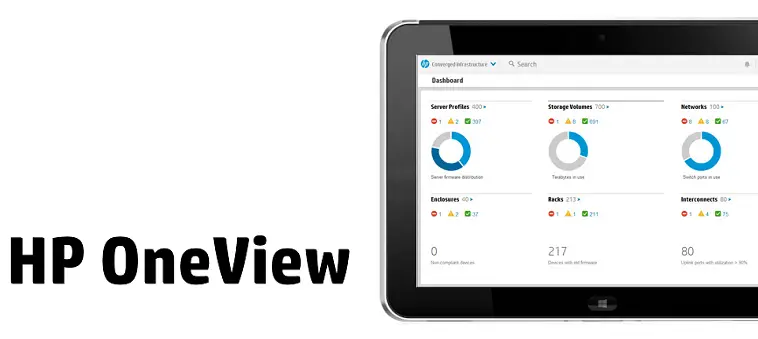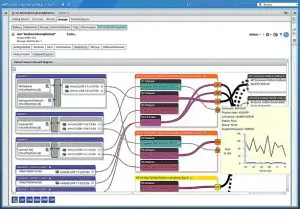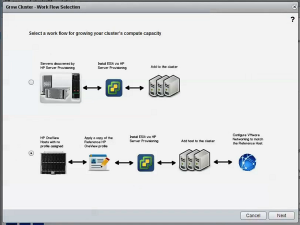Orchestration
Today, HPE introduced Ezmeral, a new software portfolio and brand name at its Discovery Virtual Event (DVE), with product offerings ranging from container orchestration and management, AI/ML and data analytics, cost control, IT automation and AI-driven operations, and security. The new product line continues the company’s trend of creating software closely bundled to its hardware offerings.
Three years ago, HPE divested itself of its software division. Much of the ‘spin-merge’, as it was called, was a portfolio of software components that didn’t have a cohesive strategy. The software that was left to remain in the company was closely tied to hardware and infrastructure – its core businesses. And like the software that powers its infrastructure, OneView and InfoSight, the new Ezmeral line is built around infrastructure automation, namely Kubernetes.
Core Competency
Infrastructure orchestration is the core competency of the Ezmeral suite of software – with the HPE Ezmeral Container Platform servicing the the foundational building block for the rest of the portfolio. Introduced in November, HPE Container Platform is a pure Kubernetes distribution, certified by the Cloud Native Computing Foundation (CNCF) and supported by HPE. HPE touts it as an enterprise-ready distribution. HPE is not doing a lot of value add at the container space, but they are working to help enterprise adopt and lifecycle Kubernetes.
Kubernetes has emerged as the de-facto infrastructure orchestration software. Originally developed by Google, it allows container workloads to be defined and orchestrated in an automated way, including remediation and leveling. It provides an abstracted way to handle networking and storage – through the use of plug-ins developed by different providers.
Portfolio
A single software does not make a portfolio, however, so there is more. In addition to the Kubernetes underpinnings, the acquisition of BlueData by HPE provides the company with an app store and controller which assists with the lifecycle and upgrades of both the products running on the Container Platform and the platform itself. There is a lot of value to companies in these components.
In addition, the HPE Data Fabric is also a component of the portfolio allowing customers to pick and choose their stateful storage services and plugins within the Kubernetes platform.
The focus of the App Store is on analytics and big data – with artificial intelligence and machine learning as a focus as well. The traditional big data software titles – Spark, Kafka, Hadoop, etc. – will continue to be big portions of the workloads intended to run on the HPE Ezmeral Container Platform.
New Workloads
The new announcement for HPE Discover Virtual Event centers around Machine Learning and ML Ops.
According to the press release, HPE Ezmeral ML Ops software leverages containerization to streamline the entire machine learning model lifecycle across on-premises, public cloud, hybrid cloud, and edge environments. The solution introduces a DevOps-like process to standardize machine learning workflows and accelerate AI deployments from months to days. Customers benefit by operationalizing AI / ML data science projects faster, eliminating data silos, seamlessly scaling from pilot to production, and avoiding the costs and risks of moving data. HPE Ezmeral ML Ops will also now be available through HPE GreenLake.
“The HPE Ezmeral software portfolio fuels data-driven digital transformation in the enterprise by modernizing applications, unlocking insights, and automating operations,” said Kumar Sreekanti, CTO and Head of Software for Hewlett Packard Enterprise. “Our software uniquely enables customers to eliminate lock-in and costly legacy licensing models, helping them to accelerate innovation and reduce costs, while ensuring enterprise-grade security. With over 8,300 software engineers in HPE continually innovating across our edge to cloud portfolio and signature customer wins in every vertical, HPE Ezmeral software and HPE GreenLake cloud services will disrupt the industry by delivering an open, flexible, cloud experience everywhere.”
Committedly Open
HPE also reiterated its engagement with open-source projects and specifically to the Cloud Native Computing Foundation (CNCF), the sponsor of Kubernetes, with an upgraded membership from silver to gold status. The recent acquisition of Scytale, a founding member of the SPIFFE and SPIRE projects, underscores the commitment, representatives say.
“We are thrilled to increase our involvement in CNCF and double down on our contributions to this important open source community,” said Sreekanti. “With our CNCF-certified Kubernetes distribution and CNCF-certification for Kubernetes services, we are focused on helping enterprises deploy containerized environments at scale for both cloud native and non-cloud native applications. Our participation in the CNCF community is integral to building and providing leading-edge solutions like this for our clients.”
Disclaimer: HPE invited me to attend the HPE Discover Virtual Experience as a social influencer. Views and opinions are my own.

Today at VMware Partner Exchange (PEX), HP announced vCenter Server integration for its HP OneView systems management package. Using REST API calls to HP OneView, the vCenter plugin is now able to initiate actions in HP OneView directly from the vSphere Web Client. HP OneView, introduced last September, is a central platform of the Converged Systems group and it is the glue that takes disparate components and makes them into a cohesive solution. The current version has support for HP BladeSystem, Virtual Connect and Gen8 ProLiant blades and rack-mount systems. Proliant G7 blades are also supported. It has a roadmap for adding support with HP networking and HP storage in the future. HP OneView provides both deployment, management and monitoring capabilities so that administrators can build out solutions and maintain solutions.

As part of a demo of the integration, HP is showing off the ability to completely automate the build and deployment of ESXi nodes in a new cluster and into existing clusters. By utilizing OneView’s engine, a VMware administrator can kick off the orchestration of a new hardware build directly from vSphere Web Client using a simple “HP Grow Cluster” menu item (pictured above). The menu item kicks off a wizard drive workflow (at right) that calls the tasks in OneView via its REST API. The vCenter plugin allows the administrator to pick a reference server profile, create multiple server profiles from the template and then uses HP Server Provisioning to deploy an ESXi host build plan.
At the core of OneView is the software-defined model of IT – where the underlying hardware is abstracted from the software-based configuration and settings. The reference server profiles define a base level of hardware and combined with settings, including firmware levels, BIOS settings and the ProLiant server model and generation preferences. Once the reference profile is deployed, it becomes a server profile assigned to physical hardware. Like Virtual Connect server profiles, these are portable and can be migrated between physical hardware.
 Customers who are familiar with HP’s Insight Control for vCenter will notice many similarities between the OneView integration and the Insight Control integration. The OneView plugin for vCenter shows network diagrams of port mappings and configuration as well as end-to-end storage mapping from the VM to the LUN and storage array. The current iteration of OneView relies on the same Insight Control for vCenter storage plugin. OneView has yet to adopt storage control and management directly into its platform, though it seems safe to expect its coming given HP’s direction.
Customers who are familiar with HP’s Insight Control for vCenter will notice many similarities between the OneView integration and the Insight Control integration. The OneView plugin for vCenter shows network diagrams of port mappings and configuration as well as end-to-end storage mapping from the VM to the LUN and storage array. The current iteration of OneView relies on the same Insight Control for vCenter storage plugin. OneView has yet to adopt storage control and management directly into its platform, though it seems safe to expect its coming given HP’s direction.
The majority of this announcement is that VMware administrators can now kick off OneView tasks directly from the vSphere Web Client, monitor and view the progress and completion of the tasks it spawns. OneView is still in early in its life, but the interface is simple and intuitive. Its not overly complex at this time and its build with modern concepts, like search, deeply integrated into the core product. Extensions like the vCenter plugin are great enhancements for administrators who are accustomed to working in a native platform and gain access to the capabilities of OneView directly from a familiar console. This release continues on HP’s track record of delivering usable functionality directly to VMware administrators from vCenter.
The HP team has a video demonstration of the HP Grow Cluster feature in the vCenter Web Client posted at hp.com. It is definitely worth a watch to see the entire process orchestrated with just a few clicks and settings.
I’ve posted before about my impressions of CloudSystem Service Provider, but it seems I had some facts wrong about the solution. I’ve had a lot of exposure to the core CloudSystem solution from briefings and demonstrations from HP, but whenever discussed, it seems I missed a critical fact about the Service Provider offering. HP is positioning CloudSystem Service Provider as a solution to assist smaller providers in offering third party cloud services and becoming a cloud broker for their existing customers. I had wrongly assumed that like the other CloudSystem offerings, all of the cloud solutions would be housed in the same, local infrastructure.
CloudSystem Service Provider is really built around a concept that HP calls its Aggregation Platform for Software as a Service (or AP4SaaS). The AP4SaaS allows the service provider to create a very customized portal experience for their customers where they can order cloud services hosted locally by the provider, hosted at a third party datacenter or even cloud services provided fully by third party cloud vendors, all while keeping the customer, their billing and relationship in-house.
It really introduces the concept of a cloud broker, a company who has expertise and knowledge to assist customers with cloud services without having all the cloud solutions in house. It allows the broker to provide the best of breed cloud services to their customers by selecting the top-tier cloud providers as their backend partners. It’s an interesting proposition for smaller, regional providers who cannot compete with the scale of an Amazon, Saavis or Terremark. Its the cloud version of VAR, where a provider packages their services and expertise with the product offering of their partner, and where the service provider retains the billing and customer service relationship with the end-user.
HP has worked with a set of SaaS providers to allow for API calls directly to them to provision and provide services for CloudSystem Service Provider. These ties allow for a fully-integrated solution. Within the portfolio of available SaaS solutions are video and web conferencing tools, project management tools, traditional Microsoft Sharepoint and Exchange hosted, and mobile device management tools. It’s an impressive slate of solutions that can be provided quickly without any capital expense.
But in addition to the cloud services, CloudSystem at its core is an orchestration and automation solution that the Service Provider can use to host their own customized or local solutions where they make sense. And like the other flavors of CloudSystem, the pre-defined Cloud Maps are really what help to drive repeatable, consistent deployments of any hosted software. While I have been able to find some other software packages that assist a company in becoming a cloud broker, I have yet to see a fully integrated solution of infrastructure, orchestration and cloud brokering software in a single package or from a single vendor. In that, HP is unique.
Here is a short video about CloudSystem Service Provider:



